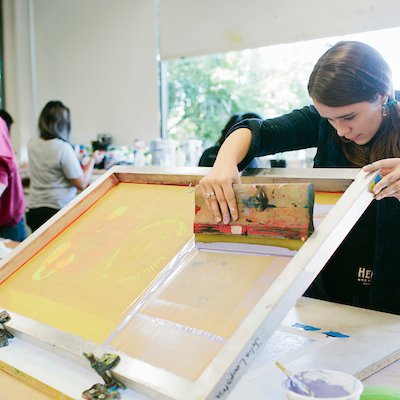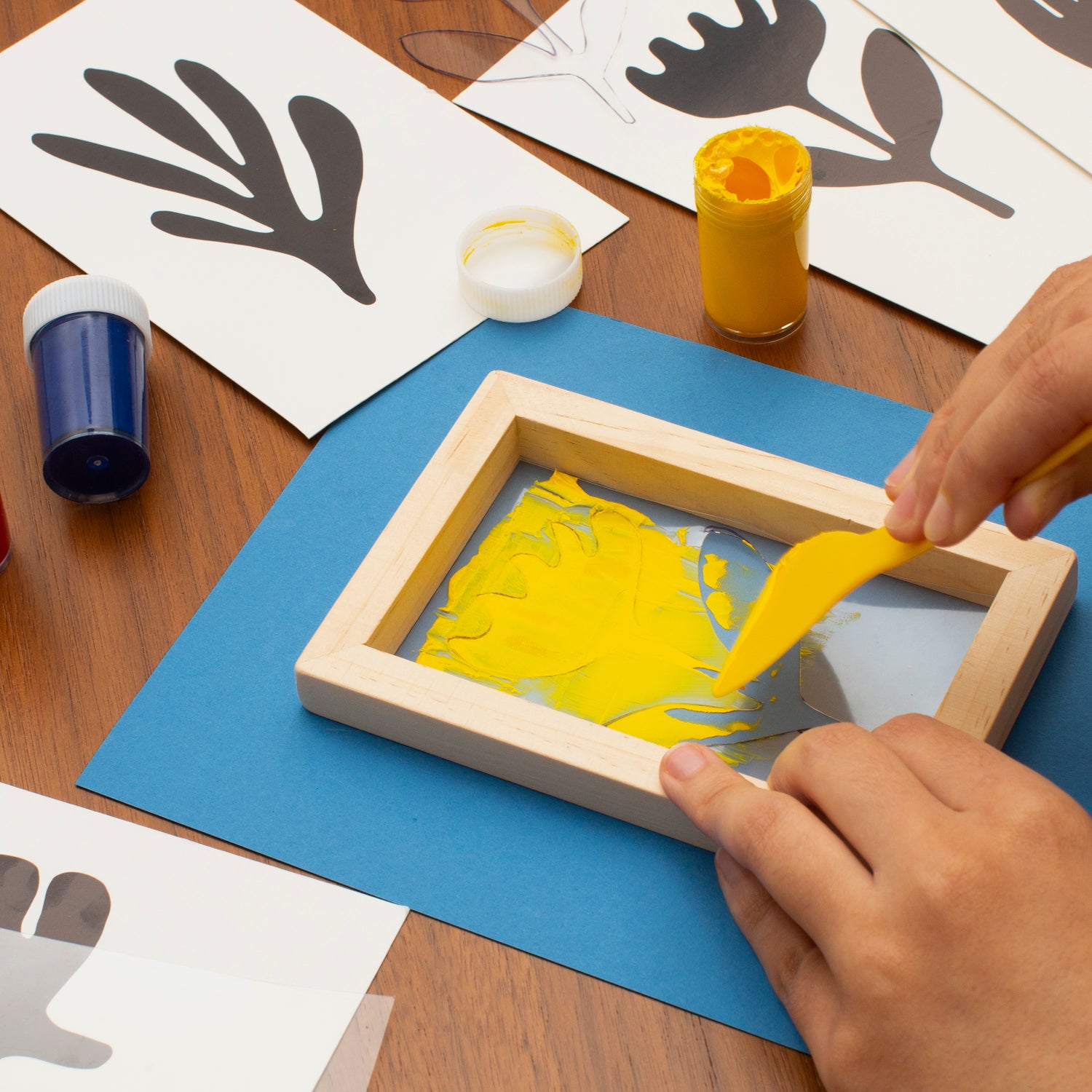Discover the Different Kinds of Screen Printing Techniques for Your Following Job
Screen printing uses a diverse series of methods that can boost any type of imaginative job. From traditional methods like serigraphy to modern advancements such as direct-to-garment printing, each strategy has its distinct advantages. Specialty options, consisting of metallic and green inks, present even a lot more opportunities. Recognizing these techniques can substantially affect the last outcome. However, the difficulty hinges on selecting the most appropriate approach for certain demands and preferred effects. What factors should one consider?

The Essentials of Screen Printing
Although screen printing might appear complicated, it is basically a simple procedure that includes transferring ink via a mesh screen onto various surface areas. The technique begins with the creation of a pattern, which defines the style to be published. This pattern is connected to a mesh screen, commonly made from polyester or nylon. Once the pattern is in place, ink is put on the screen and pressed with the mesh making use of a squeegee, leading to the desired pattern being published on the underlying material.
Screen printing can be done on a variety of substratums, consisting of plastic, material, and paper, making it a versatile option for various jobs. The procedure permits vibrant colors and elaborate designs, making it popular in markets such as art, style, and advertising and marketing. Recognizing these essentials equips people with the foundational understanding called for to explore advanced techniques in screen printing.
Traditional Screen Printing Techniques
Conventional screen printing strategies have been used for centuries, preserving the workmanship and artistry of this method. This technique utilizes a mesh screen to move ink onto a substratum, such as textile or paper, enabling resilient and lively designs. The procedure starts with creating a stencil, which blocks particular areas of the screen to manage where the ink will be applied.
One preferred strategy is serigraphy, usually utilized for minimal versions and creative prints. Another is the usage of water-based inks, which are environment-friendly and offer a soft feel on textiles - 10:9 Design Embroidery. Furthermore, conventional approaches can include hand-operated printing, where craftsmens use ink with a squeegee, guaranteeing precision and interest to detail
These methods stay valued in the industry for their tactile top quality and the special textures they create, attracting both consumers and developers who appreciate the heritage of screen printing.
Digital Screen Printing Innovations
As the demand for faster production and modification in the printing market has actually risen, digital screen printing developments have emerged as a game-changer. This innovation mixes traditional screen printing techniques with electronic processes, permitting quick prototyping and complex designs that were previously difficult to accomplish. One significant innovation is the introduction of direct-to-garment (DTG) printing, which helps with top notch, full-color prints on different fabrics without the need for displays. Furthermore, innovations in ink solutions have actually resulted in eco-friendly options that preserve vivid colors while lessening ecological effect. Using automated systems better improves manufacturing, lowering labor costs and enhancing precision. These advancements not only satisfy little batch orders and customized styles however additionally enable quicker turnaround times, making them suitable for organizations concentrated on conference consumer demands in a busy market. Digital screen printing, subsequently, stands for a crucial advancement in the domain of printing techniques.
Specialized Screen Printing Methods
Exploring specialized screen printing methods reveals a varied variety of techniques that push the borders of imagination and performance in the printing industry. Amongst these, glow-in-the-dark inks give an unique visual result, making layouts come active in low-light conditions. Metal inks, recognized for their sparkling finish, include a touch of luxury to printed materials. One more ingenious technique is discharge printing, which gets rid of color from the material instead of adding ink, causing a soft, classic feel. High-density printing creates a raised structure externally, enhancing responsive engagement. Furthermore, water-based inks are acquiring popularity for their dynamic shades and decreased environmental effect. Each of these specialized strategies accommodates details layout demands, enabling brand names and artists to develop standout items that resonate with their audiences. By leveraging these methods, companies can raise their screen printing jobs to brand-new elevations, ensuring memorable perceptions.
Eco-Friendly Screen Printing Options
Environment-friendly screen printing alternatives are acquiring traction as the market moves towards sustainability. Sustainable ink choices and the usage of eco-friendly products are vital parts in reducing the environmental influence of the printing process. By taking on these techniques, screen printers can add to a much more sustainable future while keeping high-grade results.
Sustainable Ink Selections

Biodegradable Materials Usage
As the screen printing industry advances, the incorporation of eco-friendly materials is becoming significantly essential for environmentally conscious methods. Developers and makers are now exploring inks and substrates made from natural, renewable energies that disintegrate more efficiently than conventional counterparts. These biodegradable options minimize plastic waste and minimize environmental effect, straightening with the growing demand for sustainable products.
Typical instances consist of water-based inks and organic cotton materials, both of which lessen hazardous chemicals and promote eco-friendliness. Brands that embrace these products usually improve their market charm, drawing in customers that focus on sustainability. As understanding of ecological problems continues to rise, the change towards eco-friendly materials in screen printing is likely to acquire momentum, promoting a greener industry standard.
Choosing the Right Strategy for Your Task
Exactly how can one figure out the most suitable screen printing technique for a specific task? The choice pivots on a number of elements, including the material to be published on, the complexity of the style, and the preferred production quantity - 10:9 Design Screen Printing Texas. Direct-to-garment printing is excellent for elaborate designs with many shades, while conventional screen printing excels for larger runs of easier graphics.
In addition, consideration of the end-use of the published thing is vital. For exterior applications, techniques that provide toughness and weather condition resistance, such as plastisol ink, may be favored. Alternatively, environmentally-conscious projects may benefit from water-based inks or eco-friendly materials.
Ultimately, recognizing the task's distinct demands permits for an educated option, making certain both visual charm and practical long life. By evaluating style complexity, material compatibility, and production range, one can properly pick one of the most suitable screen printing method to fulfill their project's goals.
Often Asked Concerns
What Is the Background of Screen Printing?
Screen printing came from in old China around 1000 ADVERTISEMENT, advancing with Japan and Europe. By the 20th century, it ended up being prominent in industrial art and fashion, changing how styles were created and dispersed globally.

How Do I Prepare Art Work for Screen Printing?
To prepare art work for screen printing, one should assure high resolution, utilize a suitable shade mode, develop separate layers for each and every color, and transform text to describes, guaranteeing compatibility with the printing procedure and wanted outcome.
What Materials Are Best for Screen Printing?
The best products for screen printing consist of premium inks, durable screens, and suitable substrates like cotton, polyester, or blends. In addition, utilizing appropriate solution and squeegees can improve the printing process and last results.
Can I Screen Print in the house?
Yes, screen printing in your home is possible. With the ideal products, configuration, and strategies, individuals can develop top notch prints. However, cautious factor to consider of work area and tools is necessary for effective results.

What Are Typical Blunders in Screen Printing?
Typical mistakes in screen printing include incorrect exposure times, inadequate ink consistency, imbalance of screens, insufficient cleansing of materials, and ignoring to test prints. These errors can jeopardize the top quality and accuracy of the last product.
Screen printing might seem complex, it is fundamentally a simple process that involves moving ink with a mesh screen onto different surfaces. As the demand for faster production and personalization in the printing industry has risen, electronic screen printing technologies have emerged as a game-changer. Checking out specialty screen printing techniques discloses a varied range of methods that press the boundaries of imagination and performance in the printing sector. The best materials for screen printing consist of premium inks, durable screens, and ideal substratums like cotton, polyester, or blends (10:9 Design Texas). Common errors in screen printing include inappropriate exposure times, poor ink uniformity, misalignment of displays, not enough cleaning of materials, and disregarding to examine prints